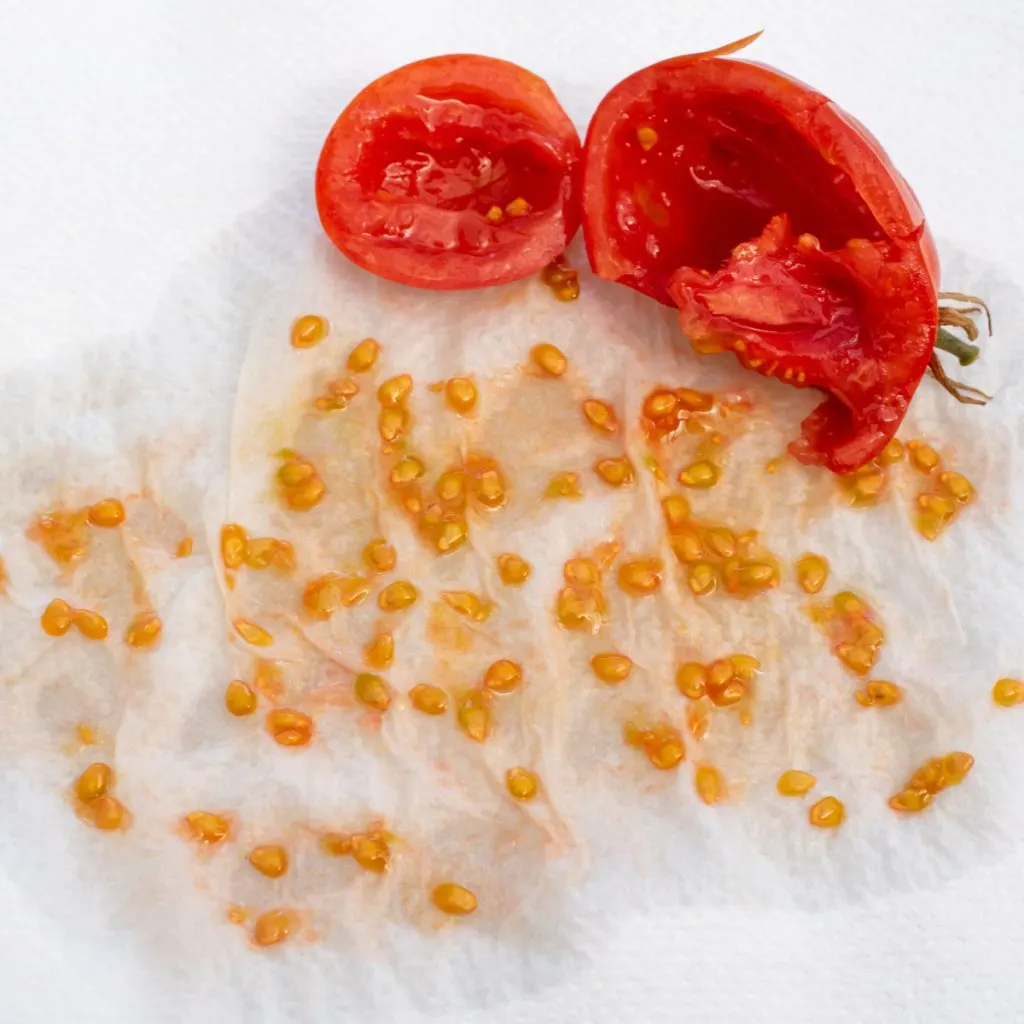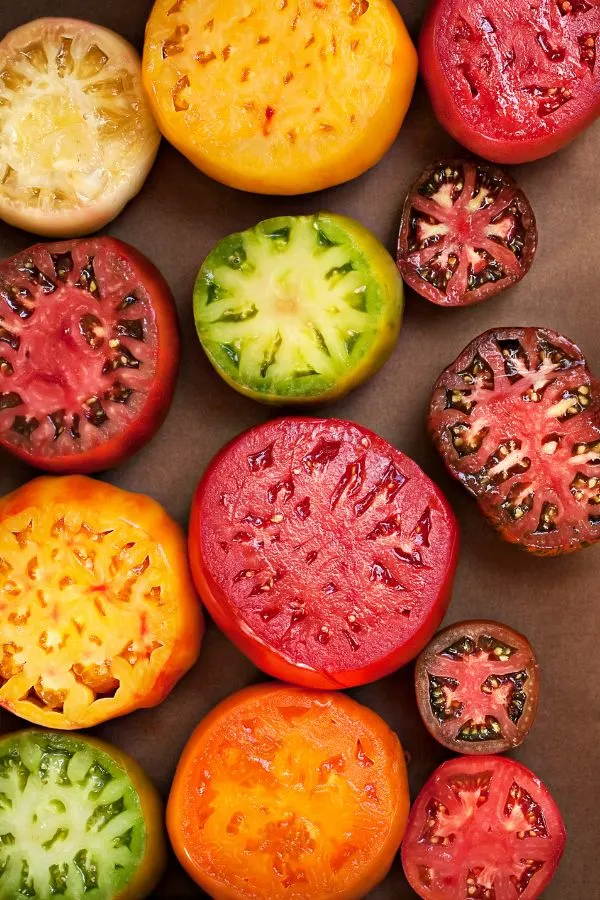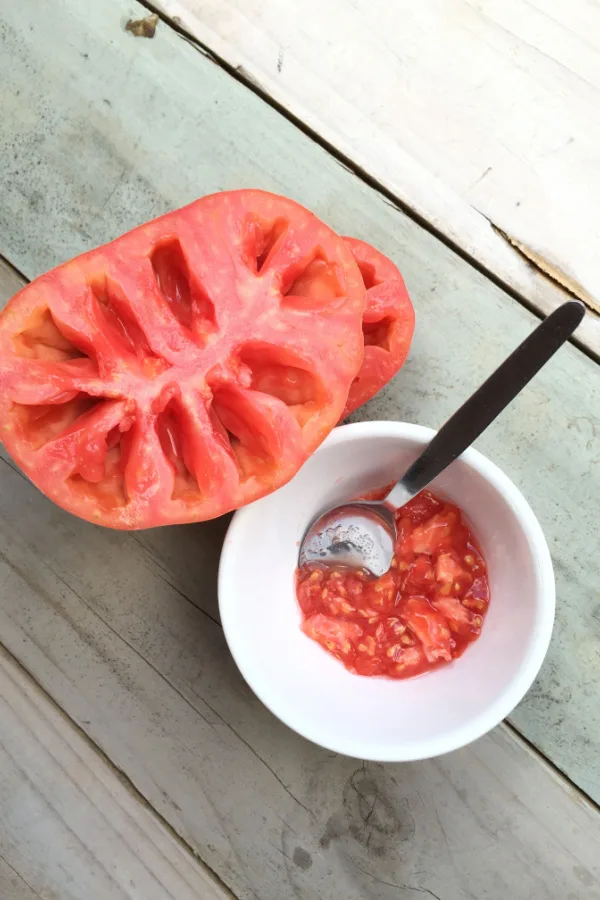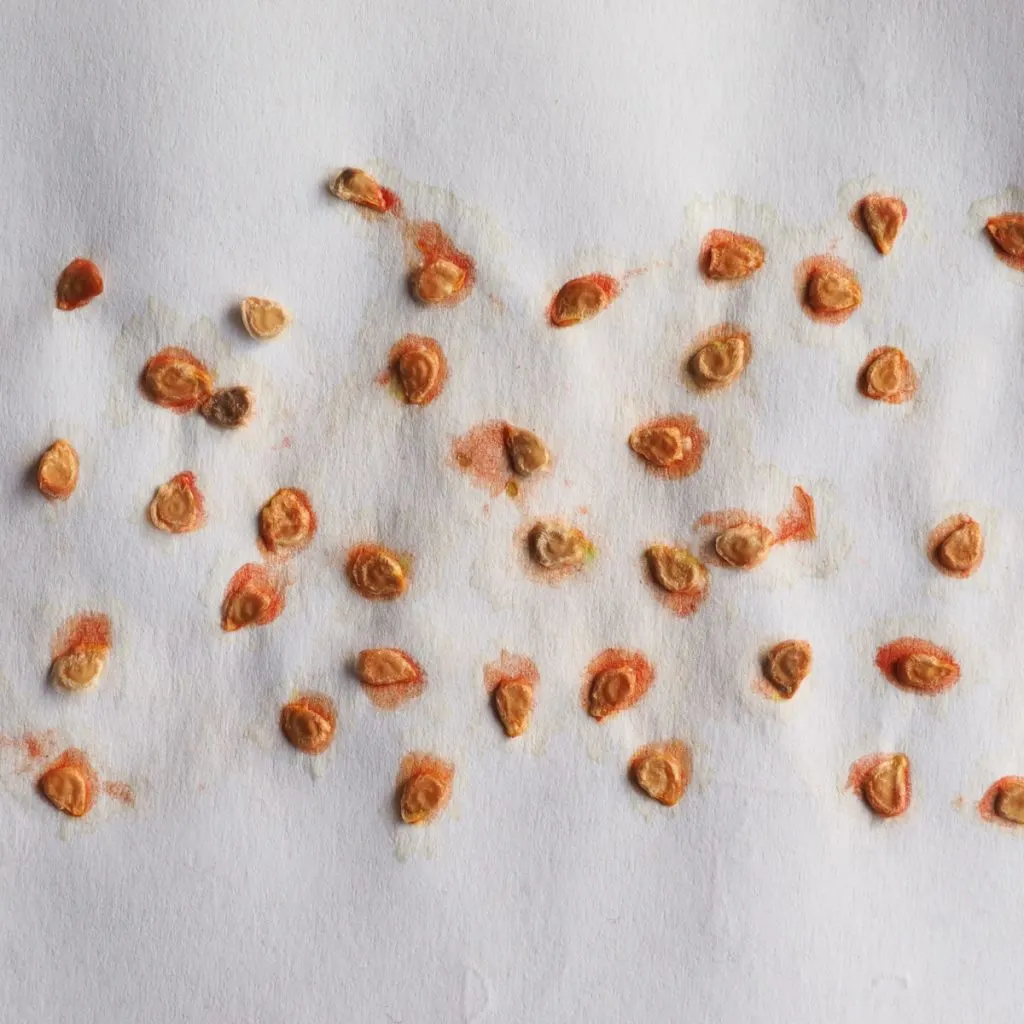Looking for a few secrets for saving the seeds from your heirloom tomato plants this year? Not only can saving seeds save you money – you are also giving yourself the ability to grow tomato plants that become stronger and better suited to your growing conditions with each passing year!
By saving your own seeds, you are able to handpick seeds from your finest tomatoes of the harvest. And that can mean a huge improvement in the vitality and performance of your plants next season – including their overall yield.
When you carefully select seeds from the best of your tomatoes at the end of the season, you’re essentially upgrading the quality of your seeds to grow next year. Why? Because these seeds have the best chance to replicate good performance. And that can mean better germination rates, sturdier and more vibrant plants, and the ultimate reward—a more abundant and flavorful harvest – all by simply having better seed stock!

How To Save Tomato Seeds From The Last Of Your Tomatoes!
When it comes to saving heirloom tomato seeds, the first thing to know is that not all types can be saved. Seeds from open-pollinated tomatoes, often referred to as heirloom tomatoes can be safely saved. On the flip side, seeds from hybrid tomato varieties cannot be kept – and here’s why:
The Difference Between Hybrid & Open Pollinated Tomatoes
Hybrids result from crossbreeding two or more tomato plants. This is done to create a unique variety which can be for size, flavor or even disease and pest resistance. But unfortunately, replanting seeds from a hybrid tomato will not yield the same hybrid outcome.
More often than not, these seeds will revert back to one of the original tomato plants used for the crossbreeding. Occasionally, they might even manifest as a new mutation. Planting these seeds can lead to a plant that doesn’t yield any fruit or produces an entirely different type of tomato.
Heirloom seeds on the other hand are pure. This means that the seeds you save from an open-pollinated plant will develop into the exact same kind of plant, producing identical fruits as the previous year. And these are exactly the seeds you want to save to grow again!

Detecting whether your seeds are heirloom or hybrid is actually quite a simple process If you still have access to the seed packet, it’s likely to contain information right on it. If that’s not an option, you can always turn to online resources. Most seed companies furnish detailed profiles for each variety, including whether they are heirloom or hybrid.
How To Save Heirloom Tomato Seeds – How To Save Tomato Seeds From The Last Of Your Tomatoes!
Saving tomato seeds is a bit different from the standard procedure for preserving seeds from other vegetables. Tomato seeds have a gelatin-like coating on their outer layer. When this coating remains intact with the seed, it hurts the seed’s ability to sprout the following year.
As a tomato naturally decomposes, the seeds within it prepare for growth in the coming year. The gelatinous coating gradually breaks down during this process. Once this protective layer dissolves, the seed is ready to germinate with ease.
This is exactly why discarded tomatoes in compost heaps often yield numerous volunteer plants. The tomato has naturally decomposed and so has the outer coating. And in the rich compost, the seed germinates easily.

So when saving tomato seeds – it’s important to still allow the seed to decompose it’s outer protective layer. The good news – it’s very easy to do!
The Process of Saving Seeds – How To Save Tomato Seeds From The Last Of Your Tomatoes!
The first step in saving seeds is selecting the best fruit from your crop. Whether you’re preserving seeds from tomatoes, peppers or any other vegetable, always select seeds from the healthiest plant that exhibits the best appearance.
This assures optimal growth, health, and success. At its core, it all revolves around selecting the best genetic stock. By picking the finest tomatoes, you’re selecting the most favorable traits in both production and flavor. And late season tomatoes are among the most mature of all and are great for saving.
To begin, halve the tomato and scoop out the pulp and seeds into a clean mason jar. There is no need to add water or a lid. Next, place the jar in a warm, sheltered area with little to no traffic. This prevents the smell of decaying tomatoes from being bothersome.
Allow the tomato to decompose for several days. Within roughly five days, the pulp should start growing white or green fuzzy mold which is normal.

Once the mold blankets most of the pulp, add water to the jar to wash off the mold. Repeat until the seeds are clean. You can then refill the jar with water. The good seeds will sink, making it possible to skim off the remaining pulp and undesirable seeds. Finish by taking off the unnecessary water and pulp and you are left with your seeds!
Drying and Preparing – How To Save Tomato Seeds From The Last Of Your Tomatoes!
All that is left is to spread the clean seeds on a paper towel or newspaper to air-dry for several days. Ensure the seeds do not contain any moisture. Once dry, seal the seeds in a plastic bag or mason jar with a snug lid. Store them in a cool, dry, and dark place. If you have the space, the refrigerator is an excellent storage option for seeds.
Now, it’s time to wait to start your seeds early next spring indoors – and you are on your way to growing great tomatoes! For more on this – see our article: The Best Way To Start Tomato Seeds Indoors – The Secrets To Starting Tomatoes From Seed!
I Grow Tomatoes
Follow Our Facebook Page For Even More Great Tomato Growing Tips! I Grow Tomatoes Facebook Page
I Grow Tomatoes is a website created for those who love all things about tomatoes – from planting and growing – to cooking and canning! We publish two articles every week, 52 weeks a year. Sign up today to follow via email! This article may contain affiliate links.
